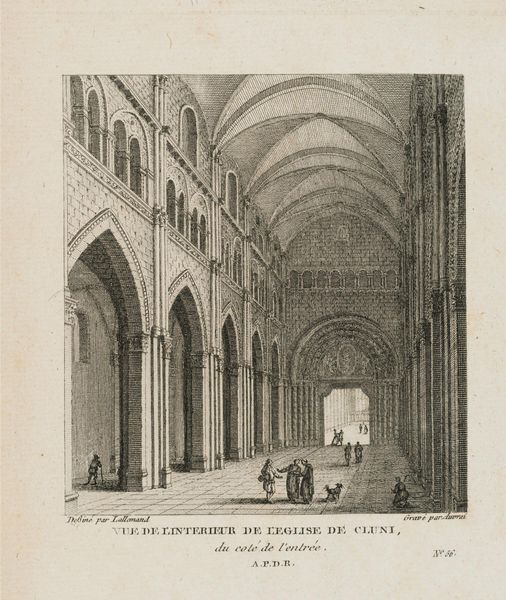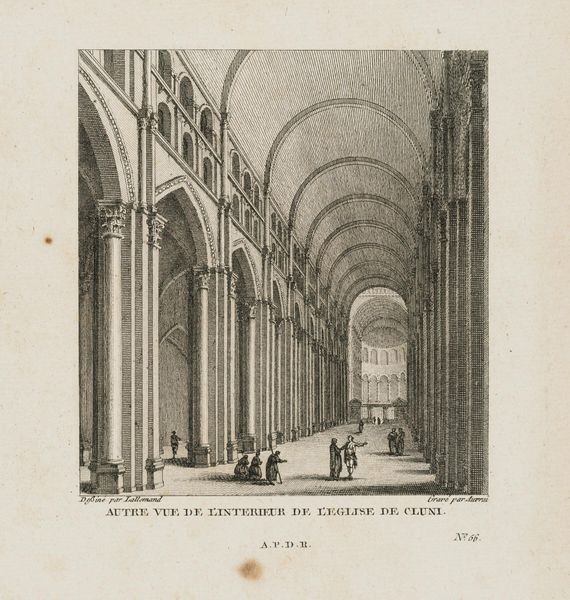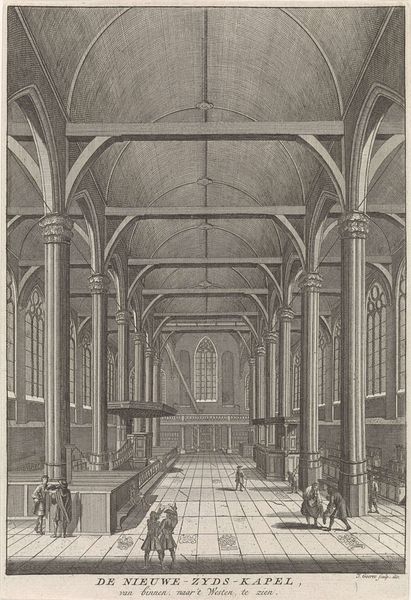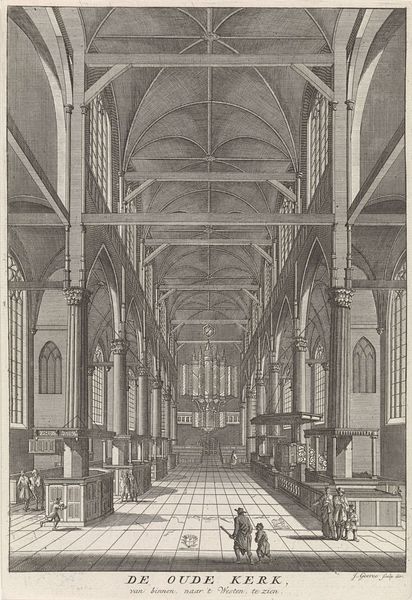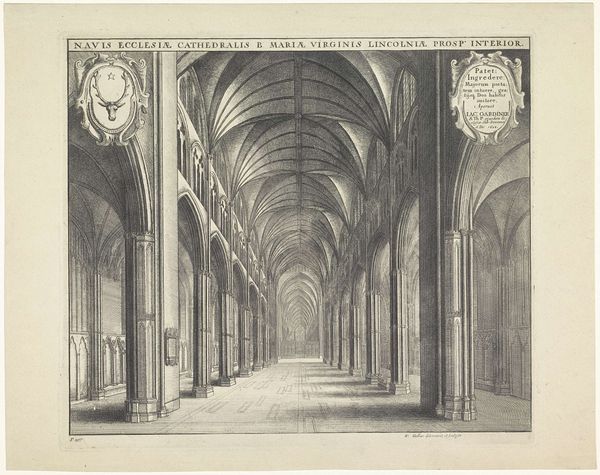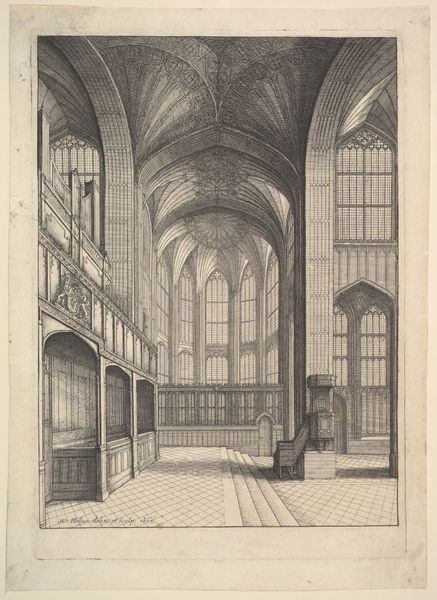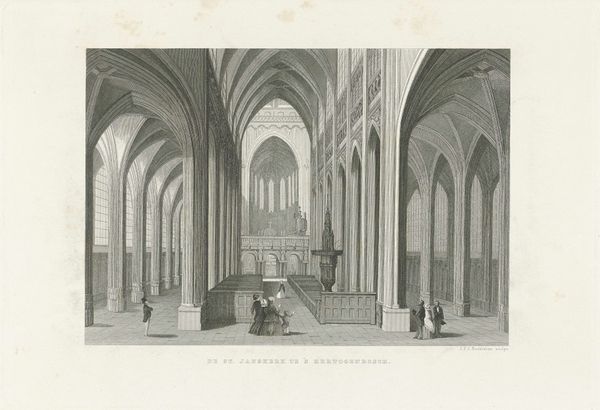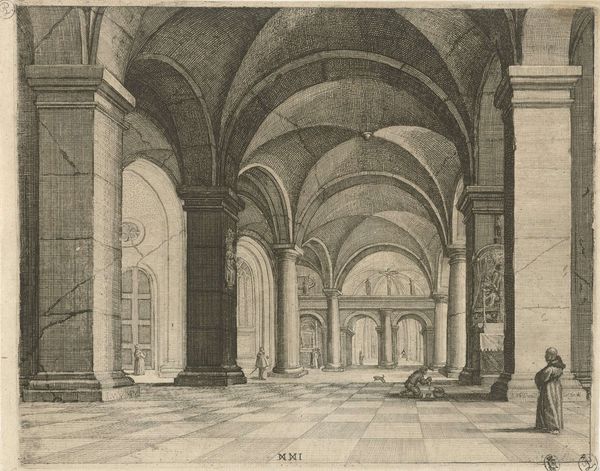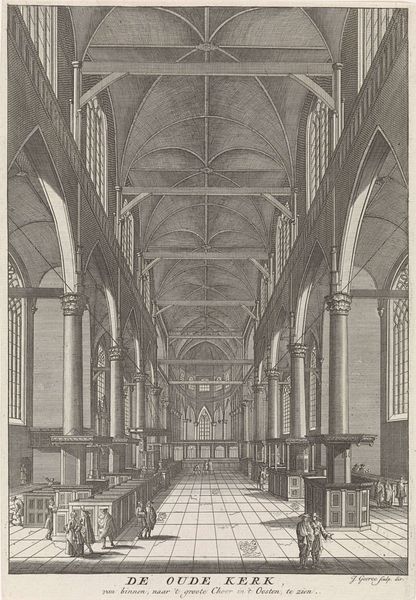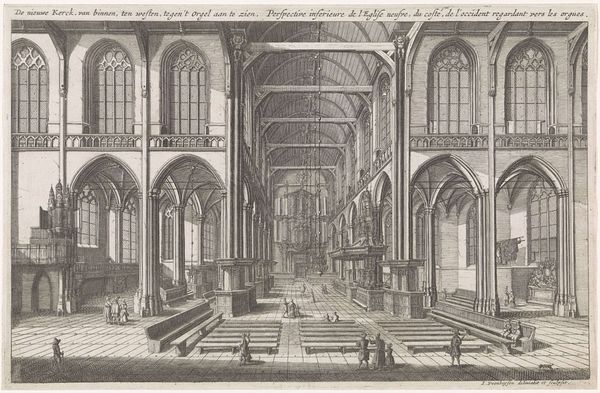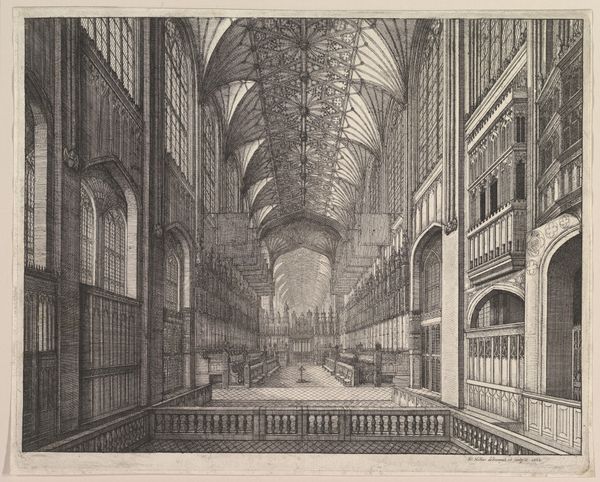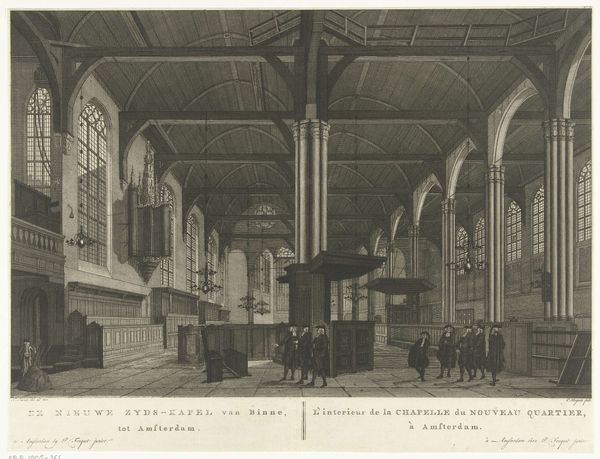
Interior of the Crypt of St. Paul's (St. Faith's) 1658
0:00
0:00
drawing, print, etching, paper, architecture
#
drawing
#
medieval
#
baroque
# print
#
etching
#
landscape
#
paper
#
form
#
geometric
#
line
#
architecture
Dimensions: 189 × 339 mm (image); 201 × 346 mm (plate); 205 × 350 mm (sheet)
Copyright: Public Domain
Editor: Wenceslaus Hollar’s "Interior of the Crypt of St. Paul's (St. Faith's)", an etching from 1658, really gives you a sense of immense space and structural complexity, but it's rendered with such precise lines that it almost feels like looking at an architectural blueprint. How would you interpret this work in terms of the symbols it might be carrying? Curator: The overwhelming geometry of the space immediately resonates, doesn't it? The repetition of the arches and columns aren't simply architectural details; they are visual cues meant to inspire a feeling of awe and reverence. The cultural memory embedded in such structures connects us to centuries of worship and shared belief. But I am struck by the decision to render an *empty* church interior. What feelings does this evoke? Editor: It almost feels like a stage set, ready for a play but utterly silent right now. Maybe hinting at a transition period? Curator: Precisely. The emptiness emphasizes the enduring power of the *idea* of the church, even in the absence of people or active worship. Hollar masterfully uses line and form, creating a dialogue between the physical structure and the symbolic weight it bears. It speaks volumes, wouldn't you agree? Editor: I do. So even with nobody *in* the image, the artist can suggest this powerful continuity across time through the built environment? Curator: Exactly! We are prompted to consider how architectural spaces serve as silent witnesses to historical events, carrying the collective memories and aspirations of a culture. Each pillar echoes with history. Editor: Thinking about architecture as a symbol itself...that’s fascinating. I'll never look at a building the same way again. Curator: And isn't that the power of art: to change the way we perceive and interpret the world around us? It truly is about revealing continuity through visual symbols.
Comments
No comments
Be the first to comment and join the conversation on the ultimate creative platform.
